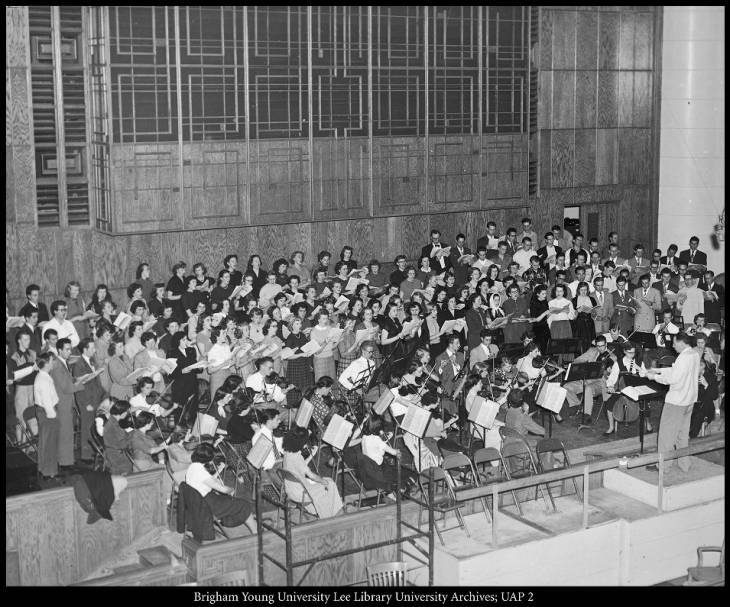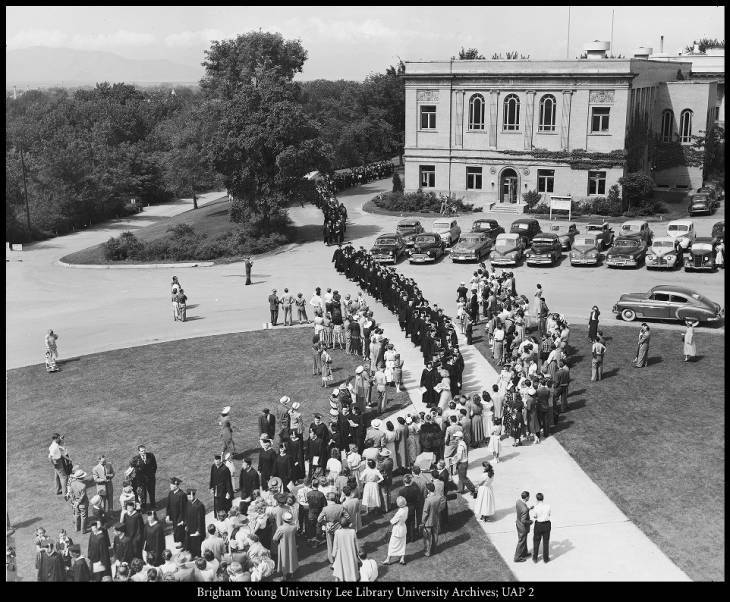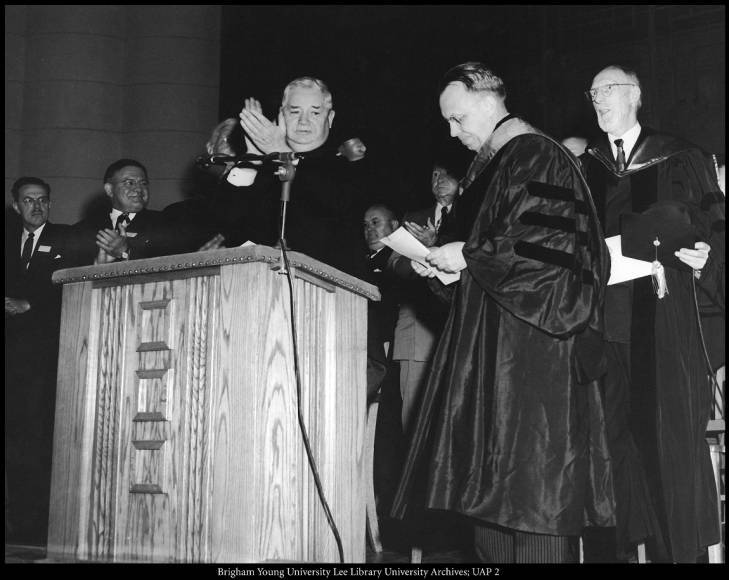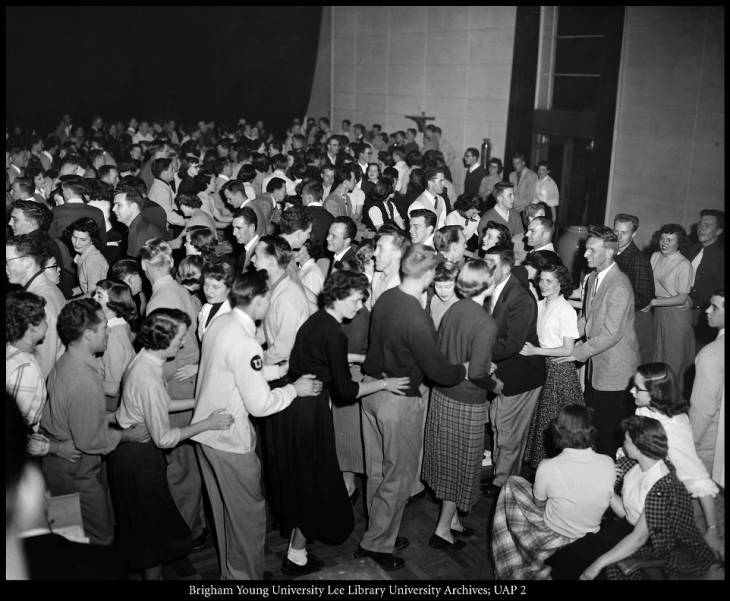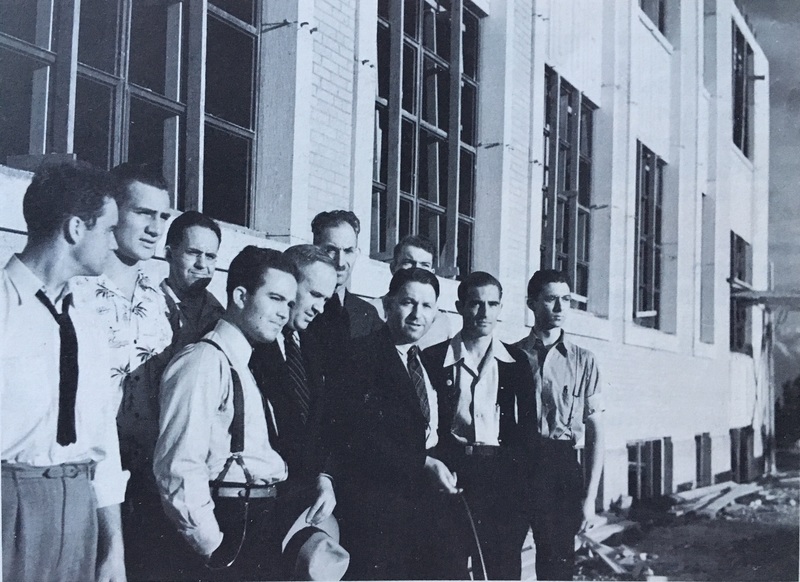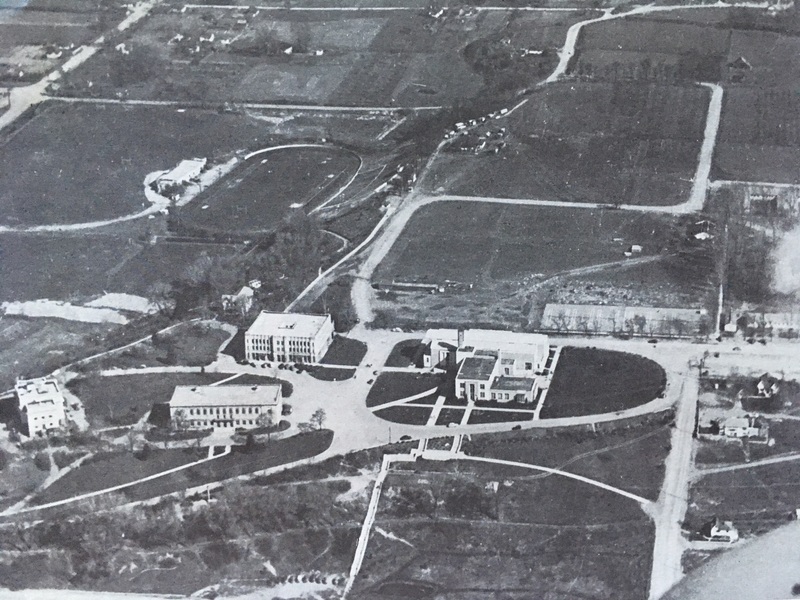Joseph Smith Memorial Building (JSB)

“The founding of the University did not begin with Karl G. Maeser nor with Brigham Young, but with the founder of the Church, Joseph Smith. Without his revelation, there would be no Brigham Young University; and it was the most fitting that a building be named in his honor.” – Franklin S. Harris, BYU President
The Joseph Smith Building (JSB) that currently resides on the south end of BYU campus is not the first building to be named after the first prophet of the LDS church. The Joseph Smith Building that preceded it was built in 1941 and served as a center for campus life before it was removed in 1990.
The Joseph Smith Memorial Building marked an uneventful but significant change for Brigham Young University. In the fall of 1938, the BYU Board of Trustees (including the daughter of Brigham Young, Susie Y. Gates) was released and thanked by the church for their service. Up to that time, the Board of Trustees was comprised of individuals close to general authorities and those in the stake presidencies of the surrounding area. In 1938, the First Presidency and the Quorum of the Twelve Apostles of the Church of Jesus Christ of Latter-Day Saints became the Board of Trustees. Heber J. Grant, president of the church, placed first priority on establishing the religious character of the school before building more academic buildings. The Joseph Smith Memorial Building was the first step toward that goal.
Like some other LDS buildings around the world, the Joseph Smith Memorial Building was constructed by the generous labor of locals. The General Welfare project the building became was the largest the church had attempted up to that time. Beginning in July 1939, Harold B. Lee, Director of General Welfare, coordinated the effort of twelve stakes and numerous BYU students, who all donated their time and efforts. Each man was asked to donate one day of work on the building, and students were granted a day off of classes for their service. Foreman Burt Russell handled the laborers and ensured the quality of the building.
On Founder’s Day October 16, 1941, the building was completed and dedicated. The new auditorium was large enough to fit the students with a total of two thousand five hundred seats. The dedication was the first time in twenty years that the whole school was able to meet in one auditorium. The auditorium also had a new state-of-the-art speaker system, which had a glitch during the dedication ceremonies. Karl A. Miller later wrote, “During the dedication, at the conclusion of the opening prayer when the amen had scarcely been uttered a cut-in from the local radio station announced loud and clear, ‘Two eggs were required and . . .’ Norman Geertsen’s hands flew and all the stops were pulled. The remainder of the recipe was never completed as far as the startled assembly was concerned.” The dedication continued uninterrupted, and President Grant offered the dedicatory prayer.
The Joseph Smith Memorial Building served a similar function that the Wilkson Center does now. The building included an auditorium, faculty offices, classrooms, a small library, a cafeteria, a ballroom, and a banquet hall. While the building’s main purpose was being the religious center of the university, it was also a center for many aspects of BYU campus life for many years. The cafeteria in the basement became known as the Commons and included an area known as the Cougareat. The auditorium served as a performance center for plays and musical numbers before the Harris Fine Arts Center was built. BYU’s graduation ceremonies were held in the Provo Tabernacle from 1909 to 1941 but were held in the Joseph Smith Memorial Building after it was built. Education Week was also centered in the new building rather than its previous location in the Education Building. The multiple relocations included more than events. In 1949, the organ in the Salt Lake Tabernacle was being replaced. The old organ was removed and shipped to BYU to be put in the Joseph Smith Memorial Building chapel.
As more BYU buildings were built, the many functions that the Joseph Smith Memorial Building served were moved to other locations. In the late 1980s, BYU once again needed to accommodate the continual growth of the student body. More classrooms were needed, and the building was not up to code for earthquakes. The cost of a new building was lower than repairing the old one, so the original Joseph Smith Memorial Building was removed and the modern JSB was built in its place.
Images





